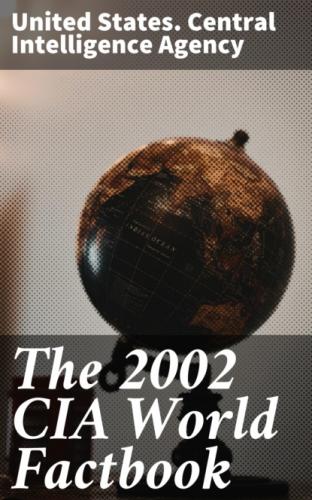Bhutan
Introduction
Bhutan
Background: In 1865, Britain and Bhutan signed the Treaty of Sinchulu, under which Bhutan would receive an annual subsidy in exchange for ceding some border land. Under British influence, a monarchy was set up in 1907; three years later, a treaty was signed whereby the British agreed not to interfere in Bhutanese internal affairs and Bhutan allowed Britain to direct its foreign affairs. This role was assumed by independent India after 1947. Two years later, a formal Indo-Bhutanese accord returned the areas of Bhutan annexed by the British, formalized the annual subsidies the country received, and defined India's responsibilities in defense and foreign relations. A refugee issue of some 100,000 Bhutanese in Nepal remains unresolved; 90% of the refugees are housed in seven United Nations Office of the High Commissioner for Refugees (UNHCR) camps. Maoist Assamese separatists from India, who have established themselves in the southeast portion of Bhutan, have drawn Indian cross-border incursions.
Geography Bhutan
Location: Southern Asia, between China and India
Geographic coordinates: 27 30 N, 90 30 E
Map references: Asia
Area: total: 47,000 sq km water: 0 sq km land: 47,000 sq km
Area - comparative: about half the size of Indiana
Land boundaries: total: 1,075 km border countries: China 470 km, India 605 km
Coastline: 0 km (landlocked)
Maritime claims: none (landlocked)
Climate: varies; tropical in southern plains; cool winters and hot summers in central valleys; severe winters and cool summers in Himalayas
Terrain: mostly mountainous with some fertile valleys and savanna
Elevation extremes: lowest point: Drangme Chhu 97 m highest point:
Kula Kangri 7,553 m
Natural resources: timber, hydropower, gypsum, calcium carbide
Land use: arable land: 3% permanent crops: 0% other: 97% (1998 est.)
Irrigated land: 400 sq km (1998 est.)
Natural hazards: violent storms from the Himalayas are the source of the country's name which translates as Land of the Thunder Dragon; frequent landslides during the rainy season
Environment - current issues: soil erosion; limited access to potable water
Environment - international agreements: party to: Biodiversity, Climate
Change, Nuclear Test Ban signed, but not ratified: Law of the Sea
Geography - note: landlocked; strategic location between China and India; controls several key Himalayan mountain passes
People Bhutan
Population: 2,094,176 note: other estimates range as low as 810,000
(July 2002 est.)
Age structure: 0-14 years: 39.8% (male 431,883; female 401,386) 15-64 years: 56.2% (male 606,184; female 571,310) 65 years and over: 4% (male 42,193; female 41,220) (2002 est.)
Population growth rate: 2.15% (2002 est.)
Birth rate: 35.26 births/1,000 population (2002 est.)
Death rate: 13.74 deaths/1,000 population (2002 est.)
Net migration rate: 0 migrant(s)/1,000 population (2002 est.)
Sex ratio: at birth: 1.05 male(s)/female under 15 years: 1.08 male(s)/female 15-64 years: 1.06 male(s)/female 65 years and over: 1.02 male(s)/female total population: 1.07 male(s)/female (2002 est.)
Infant mortality rate: 106.79 deaths/1,000 live births (2002 est.)
Life expectancy at birth: 52.83 years (2002 est.) male: Total fertility rate: 5 children born/woman (2002 est.)
HIV/AIDS - adult prevalence rate: less than 0.01% (1999 est.)
HIV/AIDS - people living with HIV/AIDS: less than 100 (1999 est.)
HIV/AIDS - deaths: NA
Nationality: noun: Bhutanese (singular and plural) adjective: Bhutanese
Ethnic groups: Bhote 50%, ethnic Nepalese 35% (includes Lhotsampas—one of several Nepalese ethnic groups), indigenous or migrant tribes 15%
Religions: Lamaistic Buddhist 75%, Indian- and Nepalese-influenced
Hinduism 25%
Languages: Dzongkha (official), Bhotes speak various Tibetan dialects,
Nepalese speak various Nepalese dialects
Literacy: definition: age 15 and over can read and write total population: 42.2% male: 56.2% female: 28.1% (1995 est.)
Government Bhutan
Country name: conventional long form: Kingdom of Bhutan conventional short form: Bhutan
Government type: monarchy; special treaty relationship with India
Capital: Thimphu
Administrative divisions: 18 districts (dzongkhag, singular and plural);
Bumthang, Chhukha, Chirang, Dagana, Geylegphug, Ha, Lhuntshi, Mongar,
Paro, Pemagatsel, Punakha, Samchi, Samdrup Jongkhar, Shemgang, Tashigang,
Thimphu, Tongsa, Wangdi Phodrang note: there may be two new districts
named Gasa and Yangtse
Independence: 8 August 1949 (from India)
National holiday: National Day (Ugyen WANGCHUCK became first hereditary king), 17 December (1907)
Constitution: no written constitution or bill of rights; note - Bhutan uses 1953 Royal decree for the Constitution of the National Assembly; on 7 July 1998, a Royal edict was ratified giving the National Assembly additional powers
Legal system: based on Indian law and English common law; has not accepted compulsory ICJ jurisdiction
Suffrage: each family has one vote in village-level elections
Executive branch: chief of state: King Jigme Singye WANGCHUCK (since 24 July 1972) elections: none; the monarch is hereditary, but democratic reforms in July 1998 grant the National Assembly authority to remove the monarch with two-thirds vote head of government: Chairman of the Council of Ministers Lyonpo Khandu WANGCHUK (since 8 August 2001) cabinet: Council of Ministers (Lhengye Shungtsog) nominated by the monarch, approved by the National Assembly; members serve fixed, five-year terms; note - there is also a Royal Advisory Council (Lodoi Tsokde), members nominated by the monarch
Legislative branch: unicameral National Assembly or Tshogdu (150 seats; 105 elected from village constituencies, 10 represent religious bodies, and 35 are designated by the monarch to represent government and other secular interests; members serve three-year terms) elections: last held NA (next to be held NA) election results: NA
Judicial branch: Supreme Court of Appeal (the monarch); High Court (judges appointed by the monarch)
Political parties and leaders: no legal parties
Political pressure groups and leaders: Buddhist clergy; ethnic Nepalese organizations leading militant antigovernment campaign; Indian merchant community; United Front for Democracy (exiled)
International organization participation: AsDB, CP, ESCAP, FAO, G-77, IBRD, ICAO, IDA, IFAD, IMF, IOC, IOM (observer), ITU, NAM, OPCW (signatory), SAARC, UN, UNCTAD, UNESCO, UNIDO, UPU, WHO, WIPO, WTrO (observer)
Diplomatic representation in the US: none; note - Bhutan has a Permanent
Mission to the UN; address: 2 United Nations Plaza, 27th Floor, New York,
NY 10017; telephone [1] (212) 826-1919; the Bhutanese mission to the UN
has consular jurisdiction in the US consulate(s) general:
